Last updated 11/14/23
America, and specifically Detroit, Michigan, had once been the center of the world with car manufacturing, dating back to when Ford first started Model T’s in 1908. What happened to the auto industry is a perfect microcosm illustrating the blessings and the curses of globalization.
I can still remember in the 1970s and 1980s when Japanese cars were literally a joke. Our family would be driving our giant Buick station wagon and passing by us would be a tiny brown Datsun hatchback that would disintegrate if it touched our bumper.
But seemingly overnight, you started to see more and more Japanese cars on the road. My dad came from China (in the years before Mao), so when he came here to the US he refused to buy anything Japanese–for understandable reasons if you remember what Japan did to China in the Second World War. So he bought a Dodge. Which broke down in one year. And a Pontiac. Which broke down in three years. And another Buick. You guessed it–it broke down in two years. In the meantime, everyone else was buying Hondas and Toyotas that lasted for years. He finally “broke down” himself and got a Toyota Camry. It lasted for 18 years.
So what happened? Well, the free market worked the way it was supposed to. Japanese auto manufacturers built a better car, and the dollars from the market flooded their way. American auto manufacturers couldn’t innovate. Making matters worse, American auto worker unions demanded top dollar for labor–not understanding that their fight shouldn’t have been against their management, but against their counterparts in Japan who through efficiencies were spending pennies on the dollar. This led to a product that was the highest price and the lowest quality–and the destruction of the once-great American car brand.
Where we are today
As the Big 3 declined, Germany and Japan prospered. They continued to innovate their products and somehow they seem to keep their labor force happy. The true test will come very soon, however.
Why? As early as 1978, car makers from every country salivating at China’s market rushed into China. It was a clear case of myopia and ignorance of history on the part of American executives.
Many American executives pointed at Japan as an example of why outsourcing to China wasn’t a bad thing. But they forgot one important thing. Japan lost a war, and paid a dear price for the sins of their fathers. And as a society, they channeled this pain into becoming incredible innovators.
But think about this. China never lost a war. They are the same corrupt government as they were since 1950. But American executives in their stupidity looked at the color of Japanese skin and Chinese skin and decided that China was to be trusted just as Japan proved trustworthy.
And China milked this for all they could. In a move that was as brilliant as it was nefarious, China’s government insisted that any foreign power that wanted to do business in China had to agree to share all of its technology in the form of joint ventures. They didn’t need to steal intellectual property, as every company from VW to Toyota to GM to Daimler to BMW was throwing their IP at them, begging for it to be stolen.
And truth be told, China doesn’t even NEED to steal intellectual property anymore. All it needs to do is buy it. Not many people know that China’s Zhejiang Geely Holding Group bought Volvo in 2010. So Volvo ceased being a Swedish brand and is now 100% a China brand.
Because the China market is so big, it’s only a matter of time before China automakers benefit from their scale and decide that they can cut off the hand that fed them. So it’s only going to be a matter of time before consumers in Europe and the USA will be faced with the same choice they faced in the 1970s. Do I pay $50,000 for a Toyota, $70,000 for a BMW, or $20,000 for a Geely?
What’s the difference between how Japan did it and how China is doing it?
In the 1970s, Japan achieved lower prices and higher quality compared to the USA the “right way”. It innovated and it found a way to pay fair wages to workers in their growing economy.
But in 2022, China is going to achieve the same thing not through innovation but its totalitarian power over its people and its businesses. The CCP will encourage its companies to steal or buy technology. And then it will draw from its endless supply of low-paid wage earners–people who through the magic of socialism have been kept in poverty for decades and who would jump at the chance of being an auto worker for slave wages and the approval of The Party (or more likely, the promise of being left alone by The Party).
In 2016 a Buick representative told the Chicago Tribune, “We believe most owners won’t care where it is built as long as it fits their needs” when asked whether they would sell cars made in China in the US. And sadly, 49% of American consumers at the time said that they wouldn’t care either. This is how blind America become as a society, where for the sake of a low price tag we’re willing to turn a blind eye to quality, our own local communities, reliability, and perhaps worst of all, continuing to fund the CCP’s wanton disregard for human rights, labor practices, and environmental protection, not to mention its increasing bullying of independent countries like Taiwan.
The only question will then be–will American and European consumers be tempted with a low price tag and deliberately look the other way to China’s atrocities, thus allowing China to control yet one more entire industry? Let’s put it this way–consumers have been tested and have failed the test every step along the way with everything from toaster ovens to air fryers to socks to computers.
How I Put This List Together
In actuality, there aren’t a lot of cars being manufactured in China and shipped to the United States right now. And much of that is due to the United States’ tariffs of 2018. By 2015, it was inevitable that China brands would start entering the United States. China brands like BYD, SAIC Motors and Geely all had clear aspirations to enter the US market. But the tariffs stopped those plans in their tracks. And as a result of the tariffs–which FINALLY meant that the US was putting up a fight against China’s own tariffs and the manipulative tactics it used to achieve low manufacturing costs–China car imports slowed and some cars that had been produced in China, such as Volvo S60, were moved to the US.
But as much as the 2018 tariffs helped, eventually corporate greed and government corruption will open them up again. In fact, as I write this Treasury Secretary Janet Yellen is all over the media saying that the tariffs should be lifted (to her credit, Trade Representative Katherine Tai is pushing against her). But Yellen has a much louder voice (no pun intended), so we’ll see what happens. If Yellen gets her wish, expect to see the floodgates to China open up again.
There is really only one car that’s popular in the US market which remains made in China, and that’s GM’s Buick Envision. And this shows how deeply entrenched GM is in China–it’s cheaper for them to pay the 25% a year tariff than to manufacture the car in the US. Avoid that car at all costs.
How I put this list together
I referenced the research from Cars.com and research from the Kogod School of Business who did an excellent job of looking into which auto makers were making cars in the US. They didn’t just look at where the vehicle had its final assembly, but also at the country of origin for the parts, engines, transmissions, and workforce. See here for their methodology.
This list is a little different than others on this site. While for other product categories I tend to list any product made in a country other than China, in this case I’m looking just at cars made in the USA.
That doesn’t mean there aren’t a lot of great cars being made in Germany, Japan, and South Korea. I am thrilled with my Toyota RAV4 which was made in Japan, but I would have been just as happy with one made in Kentucky.
But in this case, I haven’t found any sources like Cars.com that did this level of analysis that included both final assembly and components. If anyone knows of a source like this please let me know. But for now, I’ll focus on company that clearly are as “all in” as possible on domestic manufacturing in the US and thus, which are not going to be affected if and when tariffs get lifted.
2023 Update
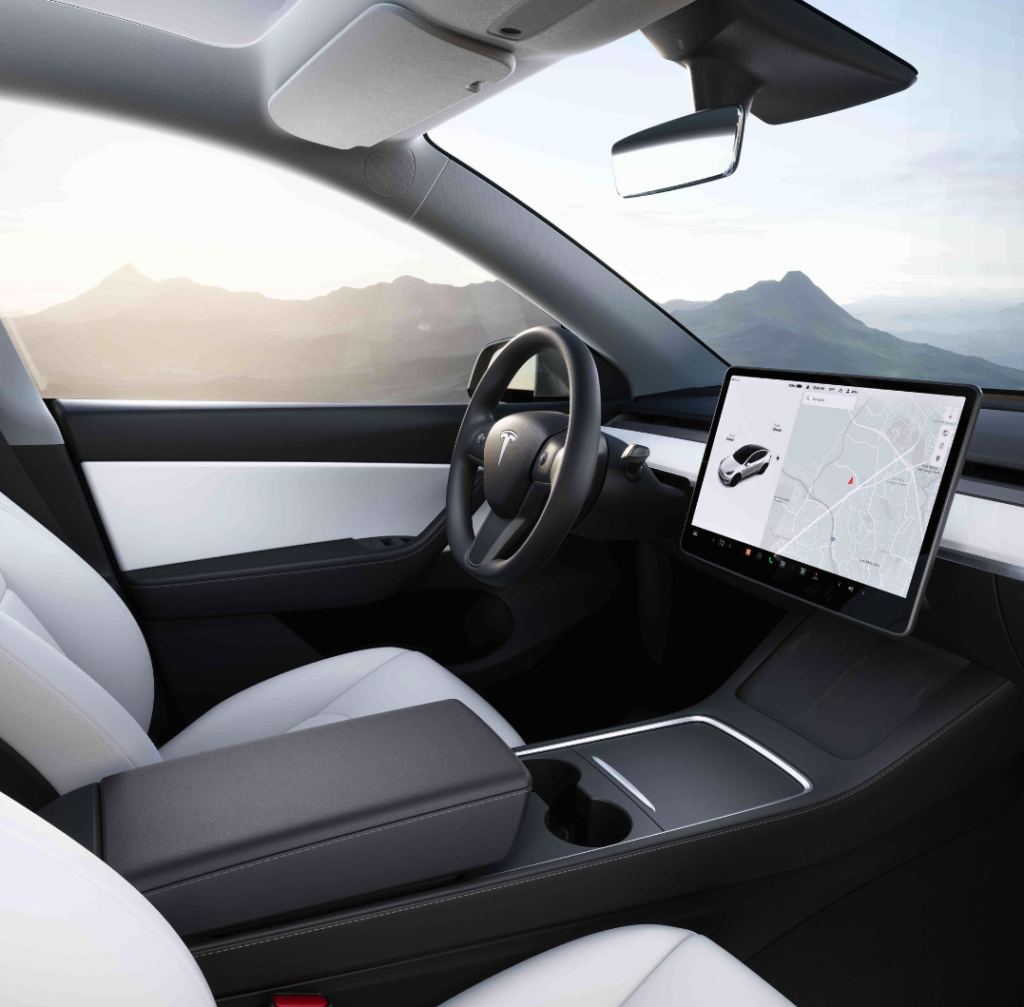
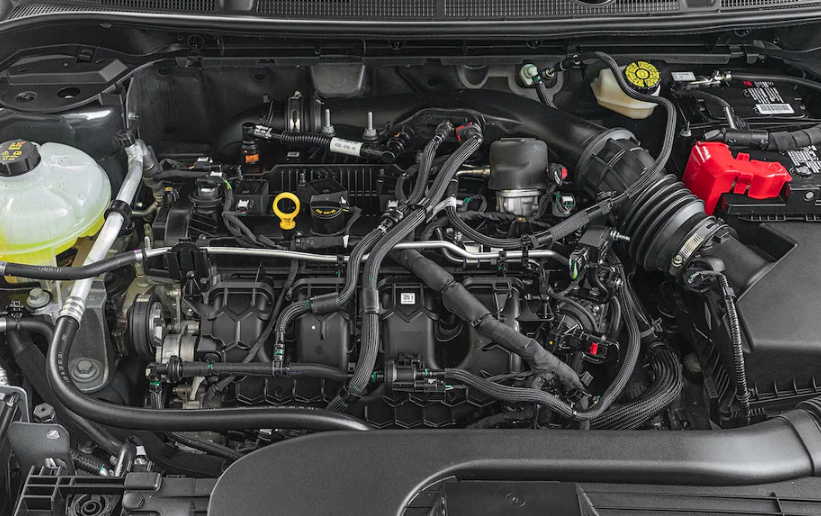

1. Tesla
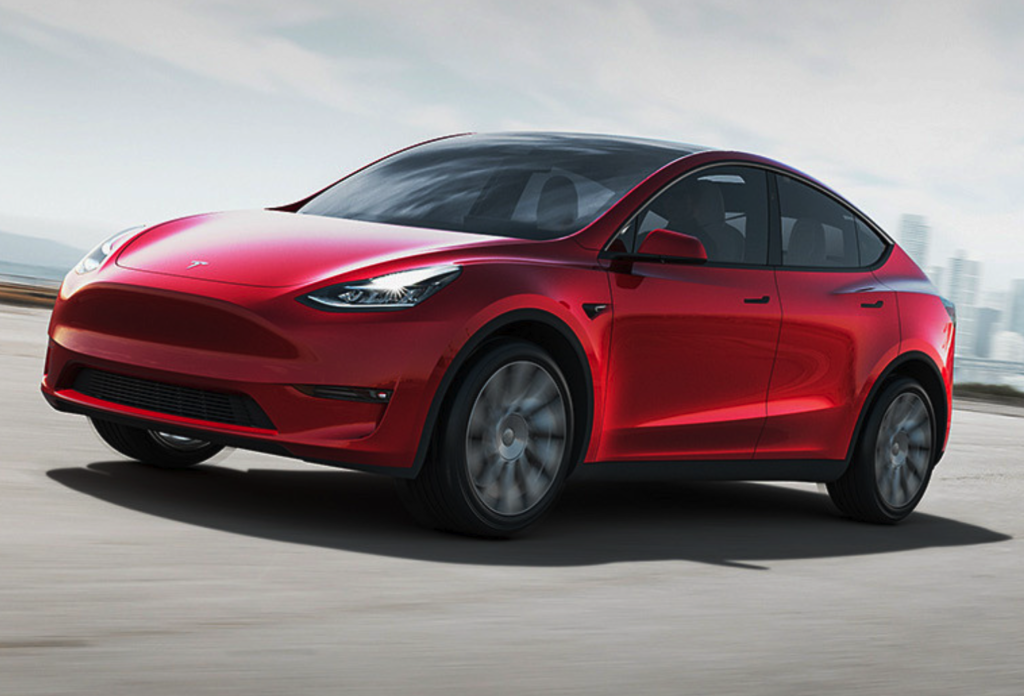
After reviewing this list in 2023, Tesla still stands head and shoulders above everyone else.
This one surprised me the most, as it’s well known that Tesla has a giant factory in Shanghai, the Gigafactory 3, that serves the China market but also exports to Europe and Japan. But evidently, the US market is still able to be served by its factories in Fremont, California and Austin, Texas. A whopping 77.5%-82.5% of the material and parts in US-manufactured Tesla are sourced from the US or Canada.
Tesla also recently opened a factory in Berlin, which should allow European customers to get Europe-made models.
Time will tell if Tesla is able to sustain sourcing and manufacturing in local markets as opposed to getting everything sent from Shanghai. It is hopeful to see Elon Musk emphasizing the importance of keeping manufacturing local–in many ways it’s a throwback to when communities were built around manufacturing, and employees became ambassadors. Contrast this with executives at GM who just see customers as dollar signs.
The one danger, of course, is that US regulations make US manufacturing too expensive to maintain, and China regulations (or strategic and selective disregard for them) make China manufacturing too cheap to ignore.
Several Tesla models made the top 20, including the Tesla Model Y (made in Fremont or Austin) and the Model 3, Model X and Model S (all made in Fremont).
2. Honda

Honda jumps to the #2 carmaker on my 2023 list, supplanting Ford which seems to be in freefall.
Of all the Japanese carmakers, Honda seems to do the best with manufacturing in the United States. Of the top 25 in Cars.com’s 2023 list, Honda and Acura make up almost half the list of cars made in America using American-sourced parts.
The Passport, Ridgeline, Odyssey, and Pilot are all made in Lincoln, Alabama and the Accord is made in Marysville, Ohio. The Acura MDX and RDX are also made in Ohio. According to Honda’s Web site, two-thirds of all Honda and Acura vehicles sold in the US were made in the US.
3. Toyota
Toyota is making its first appearance on this list, thanks to Cars.com naming three of its cars to the top 25 of US-made cars (Tundra #12, Sequioa HEV #18, Highlander #22). Personally, I own a RAV4 that was made in Japan and I love it.
Cars.com’s list covers not just where a car is made, but where all of its parts come from (and thanks to the American Automobile Labeling Act. This was a rare law that made it through Congress in 1992, notably (and not coincidentally) just before China was given MFN status. It’s an act that most likely saved countless of lives by preventing carmakers from “sneaking” in substandard parts from China manufacturers.
Seeing Toyota in three of the top 25 spots gives me hope that if parts for the Tundra, Sequoia, and Highlander are being sourced from the US, then hopefully some of those parts are making their way to assembly plants around the world. And it’s also nice to see that aside from a joint venture in China (required for them to sell in China), there aren’t any factories nor major manufacturing being done there.
4. Ford
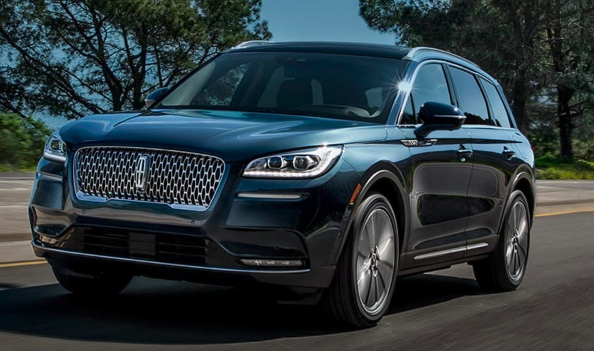
Strangely, there’s a disconnect between the Kogod School of Business’s analysis and Cars.com. In Kogod’s 2022 analysis, they still name the Lincoln Corsair by Ford as the #1 American-made car with the most US/Canadian components (72%) and a US-made engine.
Cars.com still names it as #16 in 2023 (Other than Tesla and Chrysler, it’s the only American brand in their top 20).
Ultimately, this is explained by the differences in their methodologies. Cars.com puts its weighting on five factors: where it’s assembled, what percentage is US/Canadian parts, where does the engine come from, where does the transmission come from, and the number of US workers employed. Kogod looks at seven factors, including where the brand is headquartered, where the workforce is located, where R&D occurs, where assembly happens, where the engine is made, where the transmission is made, and where parts are made. Of course, Kogod’s first criteria explains why Ford is able to outrank brands like Honda and Acura in their list.
Of course, Ford has embraced China in several ways. They’ve decided to produce the electric version of their iconic Mustang, the Mustang Mach-E in Mexico for the US market, and recently started making them in China for the China market. In 2017, Ford made the decision to build their best selling car the Ford Focus in China, and then decided to stop selling it in the US altogether rather than deal with the 25% tariffs.
But I still do see on this list the Lincoln Corsair (made in Louisville, Kentucky), the Ford Ranger and Bronco (both made in Wayne, Michigan), the Ford Expedition (made in Louisville), and the Ford F-150 (made in Claycomo or Dearborn, Michigan). And the original, gas-guzzling muscle car the Mustang is still made in Flat Rock, Michigan. So clearly Ford has shifted its US strategy to higher end (and higher priced) models. About 80% of the components come from domestic sources.
5. Dodge and Jeep (Stellantis)
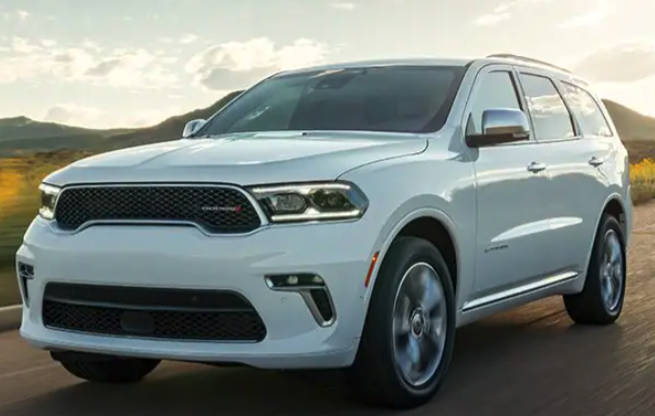
The Dodge Durango still manages to make it to #6 on Kogod’s list and is hanging on to #21 on Cars.com’s list. It’s still made out of Detroit.
Like the Jeep brand, the Dodge brand had a storied history (the Dodge Brothers Company was originally founded in 1900) but ended up moving with the rest of the Chrysler brand to Stellantis. Of Dodge’s four current models, only the Durango made the list–the Challenger and Charger are made in Canada.
But again, keep your eye on the other hand. The Dodge Journey (which isn’t currently sold in the North American market) is being made in China by the Guangzhou Automobile Group, Co. Ltd (GAC) which has a long-standing joint ventureship with Fiat-Chrysler (and now Stellantis).

There is hardly a brand that’s more American than Jeep, a brand which originated in its use by Willys-Overland who built the first four-wheel drive reconnaissance vehicles for the US armed services. The Jeep brand was bought by Kaiser Motors, which was bought by AMC, which was bought by Chrysler, which folded into DaimerChrysler, which sold Chrysler to a private equity company, which folded into Fiat Chrysler Automobiles, which was bought by Stellantis. Whew.
While several Jeeps were recognized on both lists, including the Gladiator, the Grand Cherokee, the Wrangler, and the Wagoneer, it’s the Jeep Cherokee, made in Belvidere, Illinois, that made the top 5 of Kogod’s list (it wasn’t eligible for cars.com’s list but probably would have made it there too).
Conclusion
It was good to see a few entrants I hadn’t noticed before to cars.com’s top 25, including the VW ID.4 EV, the Kia K5 and Sportage, the Nissan Pathfinder, the Infiniti QX60. It’s a good sign that more brands are shifting manufacturing back to the USA.
I was also pleased to see many other auto brands and models on the list, including ones you might not expect like models from Kia, Toyota, Nissan, and (sad that I no longer expect it) General Motors. It’s heartening to know that there is still an industry hasn’t been completely lost to China. But make no mistake–automakers need to take the lesson from other industries. The only reason they haven’t faced a challenge from China is that China automakers are so busy fulfilling the demand in their own country (using intellectual property gained from the forced “joint ventures” from automakers in the free world).
But as soon as the US government loosens tariffs, make no mistake that China brands are coming. And they’re going to have sticker prices that will be hard for consumers to ignore, helped in no small part by a corrupt government who will not hesitate to put their fingers on the scales.
What did you think of the Cars.com list? Are you outside of the USA and want to share your experiences with car brands that are honoring and protecting local communities and manufacturing? Let us know in the comments!
- Tags:
- cars

THANK YOU. I just happened to stumble onto your website.
I have been trying to locate a few items that I wish to buy but I couldn’t find much on items that do not have PARTS from China and then “built” in North America.
I am looking for:
1. an electric vehicle
2. a laptop
3. a desktop &
4. a solar panel system
Now, I can buy with a bit more confidence. I know sometimes that being: “assembled”, “built”, “manufactured”, etc — all have different definitions and are assumed to be the same.
It is all very confusing and time-consuming.
Thanks for the comment, Beverly. Unfortunately it’s nearly impossible for a consumer to identify the origin of every single part that goes into every single product. It’s likely that even people working on the production lines don’t even know where all the components come from. The only people in a company that would know are those in management and finance who sign the deals and write the checks, and of course without government intervention they’re never going to reveal who they deal with and in what amounts.
The one thing that’s pretty much guaranteed, unfortunately, is that there probably will be something from China in virtually every product you buy.
Country of Origin has been mandatory on product packaging since 1931 and there aren’t a whole lot of rules that dictate what that means, other than the country of origin must be where the final assembly and/or the “most substantial transformation” of the product took place. So technically, if someone buys 100% of their parts from China and assembles them in Vietnam, they could technically say “made in the Vietnam”.
So clearly, it’s not perfect. As consumers, the best we can do is to continue to ask the questions, insist on transparency, and reward companies that are more transparent than others. For example, it’s clear to me that Samsung as a company is serious about divesting from China, while Apple’s supposed divestment is in name only, only as much as they need to do to weather the bad PR.
Country of Origin labeling is a good start, as you know that at least SOME of the manufacturing happened outside of China. But to your point, it’s not enough.
Here’s what has been going on recently, The US used to be the largest supplier of Lithium until the 90’s when they were pretty much shut down. Since Biden got into office, there has been a push to get some VERY large Lithium mines opened up. Look at the Salton Sea in California. They came up with a better method of extracting Lithium and the Salton Sea in the coming years may become one of the largest Lithium mines in the world. there’s others, but it’s just been battling with certain groups that don’t want them opened up.
Also, our Country simply lacks training of kids growing up that want to work in mfg. of cheap parts. China and other Countries are simply setup to produce large production of cheap parts as THEY have been investing in training programs at the high school level. We don’t have those types of programs in the US.
Ask any kid in high school if they want to make low wages sitting in a mfg. plant, most will tell you they have no desire to have that type of job. China has regions that are setup specifically for mfg. lots of products and they are close to each other and they can ramp up a new production line in a manner of a few weeks, where it would take months to do the same in the US. That’s why mfg. of products has gone to China, and other parts of Asia and now going to India. But, there are semiconductor mfg. that’s being opened up in the US over the next few years due to Biden Chips Act and that also attracting hundreds of billions in private investments into more US mfg. plants for Semiconductors, which impacts many different industries.
US still has auto assembled in the US as not only American car companies by foreign car companies assemble cars in the US. Toyota, Nissan, Honda/Acura/. https://www.businessinsider.com/all-the-japanese-cars-made-in-the-usa-2017-11#lexus-es-350-toyota-motor-manufacturing-kentucky-georgetown-kentucky-14
Mercedes, BMW and other European brands are made in the US. Some parts come from other Countries, but some of the parts are made in the US.
It’s just what makes the most sense.
But the biggest threat to jobs is automation/robotics. That’s the biggest threat to jobs around the world.